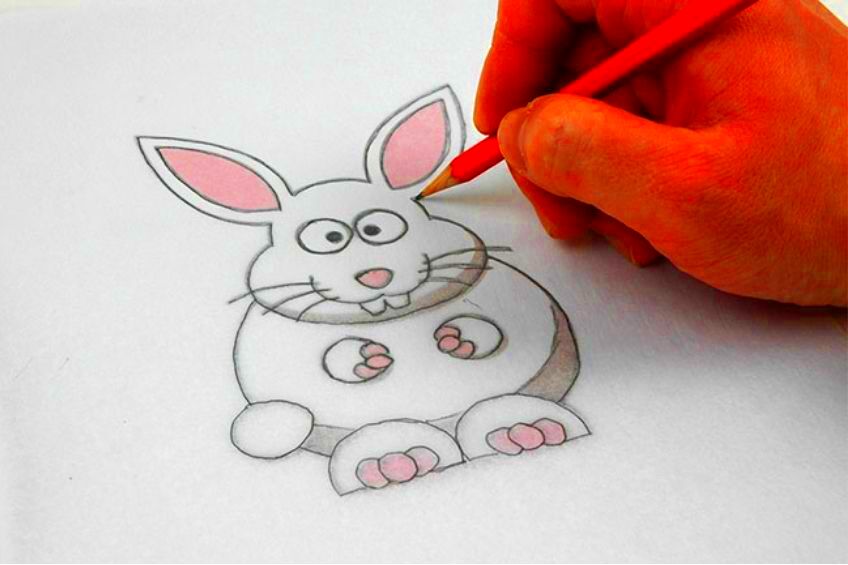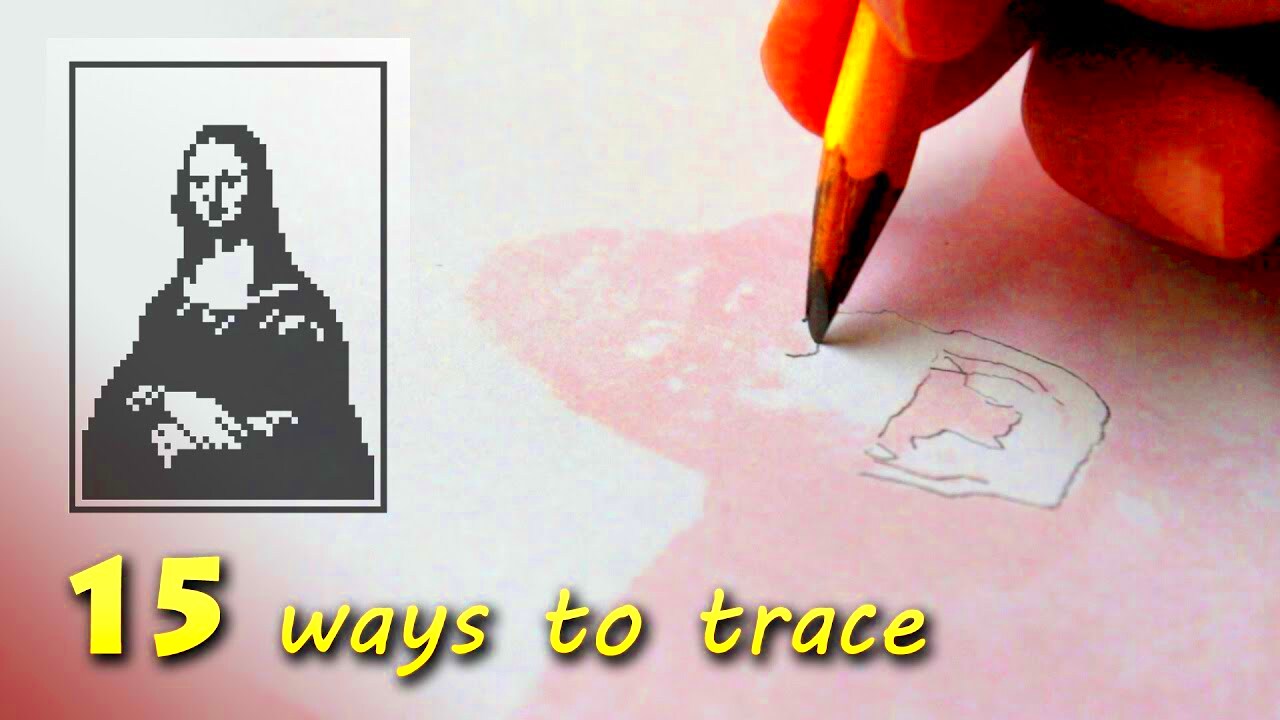Image tracing is a valuable skill for artists, whether you're a beginner or a seasoned professional. This technique allows you to replicate an image accurately, serving as a foundation for your drawings. It involves using an existing
Tracing can also help you develop your style. As you become more comfortable with the process, you can start to add your own flair to the traced images, turning them into unique artworks. Plus, it’s a fantastic way to practice and improve your drawing skills. So, let’s dive deeper into how to choose the right images and what tools you’ll need!
Choosing the Right Image for Tracing

Not all images are suitable for tracing, so selecting the right one is essential. Here are some tips to consider:
- Clear and Simple Images: Start with images that have clear outlines and minimal details. Simple shapes are easier to trace.
- High Contrast: Look for images with strong contrasts between light and dark areas. This helps in identifying the lines and shapes more easily.
- Size Matters: Choose images that are large enough for you to see the details but not so complex that they overwhelm you.
- Reference Your Style: Select images that inspire you or align with your artistic goals.
Remember, your goal is to practice and improve, so don’t hesitate to experiment with different types of images as you grow more confident!
Also Read This: Uncover How to Download from Shutterstock Without Watermark
Tools Needed for Image Tracing

Having the right tools can make the tracing process smoother and more enjoyable. Here’s a list of essential tools you’ll need:
| Tool | Description |
|---|---|
| Tracing Paper | This semi-transparent paper allows you to see the image underneath while tracing. |
| Pencils | Choose a range of pencils from hard (H) to soft (B) for different effects. |
| Lightbox | A lightbox can help illuminate the image from below, making tracing easier. |
| Markers or Pens | These are great for outlining your traced image, adding a finished touch. |
| Digital Tools | If you're tracing digitally, software like Adobe Illustrator or Procreate can be very useful. |
With these tools at your disposal, you'll be ready to tackle any image tracing project with confidence!
Also Read This: How to Become a Freelance Photographer for Getty Images
Steps to Trace an Image Accurately
Tracing an image accurately can be a rewarding experience. By following a series of straightforward steps, you can improve your skills and create impressive drawings. Let’s break down the process:
- Select Your Image: Start by choosing a clear, high-contrast image that you want to trace.
- Prepare Your Workspace: Set up a comfortable space with good lighting. If using tracing paper, lay it over your reference image. If using a lightbox, place your image underneath the tracing paper.
- Outline the Major Shapes: Begin by lightly sketching the main shapes and outlines. Don’t worry about details just yet; focus on the overall composition.
- Refine the Details: Once the major shapes are in place, add smaller details. Pay attention to curves, lines, and any intricate parts of the image.
- Adjust Proportions: If something looks off, don’t hesitate to make adjustments. It's all part of the learning process.
- Finalize Your Drawing: Once you’re satisfied with the tracing, go over it with a pen or marker to create clean lines. Then, erase any unnecessary pencil marks.
- Practice Regularly: The more you trace, the better you’ll get. Keep challenging yourself with different images!
Following these steps will help you gain confidence in your tracing abilities and enhance your drawing skills.
Also Read This: How to Sell Stock Photos to Adobe
Common Mistakes to Avoid When Tracing
While tracing can be simple, it’s easy to make mistakes. Here are some common pitfalls to watch out for:
- Ignoring Proportions: Many beginners overlook proportions. Always step back and check if the elements of your image are in line with each other.
- Over-Tracing: Tracing every little detail can make your drawing look cluttered. Focus on the main lines and shapes.
- Skipping the Outline: Skipping the outline can lead to inaccuracies. Always start with the main outlines before adding details.
- Not Using References: It’s tempting to trace from memory, but using a reference image is crucial for accuracy.
- Using the Wrong Tools: Using the wrong paper or tools can affect your tracing. Make sure you have appropriate materials for your project.
By avoiding these mistakes, you can make the tracing process more enjoyable and productive. Remember, practice makes perfect!
Also Read This: How to Scale Thumbnails in Behance for Optimizing Your Portfolio’s Visuals
Enhancing Your Traced Image
Once you’ve completed your tracing, you might want to enhance it further. Here are some creative ways to add depth and personality to your traced images:
- Add Color: Use colored pencils, markers, or digital tools to bring your traced image to life.
- Incorporate Patterns: Experiment with patterns in your drawing. You can fill in sections with different textures to create interest.
- Mix Media: Combine your traced image with other materials like watercolor, collage, or even digital effects.
- Shading and Highlights: Add depth by incorporating shadows and highlights. This can make your image appear more three-dimensional.
- Experiment with Styles: Try altering the style of your traced image. For example, turn a realistic image into a cartoon or abstract version.
Enhancing your traced images allows for creativity and personal expression. Don’t be afraid to experiment and find what works best for you!
Also Read This: How Much Ideal Image Services Cost
Using Tracing Techniques for Different Art Styles
Tracing isn’t just a one-size-fits-all technique; it can be adapted to various art styles. Understanding how to use tracing effectively can help you explore different artistic expressions. Let’s look at how you can apply tracing to various styles:
- Realism: When tracing for realistic drawings, focus on fine details and shading. Use high-quality images with clear textures to replicate lifelike effects.
- Cartooning: For cartoon styles, simplify shapes and exaggerate features. Tracing helps establish clean lines that capture the playful essence of cartoons.
- Abstract Art: Tracing can aid in creating abstract pieces. Focus on specific shapes and patterns, then experiment by modifying them to achieve a unique look.
- Illustration: Use tracing to build complex illustrations. Start with basic outlines and layer details gradually, allowing you to create depth and interest.
- Graphic Design: In graphic design, tracing can help create logos or icons. It allows you to maintain precision and consistency across your designs.
By adapting tracing techniques to fit different styles, you can broaden your artistic skills and discover new ways to express yourself. Don’t be afraid to mix and match styles for a truly unique creation!
Also Read This: Creating Beautiful Paper Flowers on Dailymotion
Frequently Asked Questions
As you embark on your tracing journey, you might have some questions. Here are a few frequently asked questions to help you out:
| Question | Answer |
|---|---|
| Is tracing cheating? | No, tracing is a legitimate learning tool. It helps you understand proportions and shapes better. |
| Can I trace images from the internet? | Be cautious about copyright. Use images that are free to use or in the public domain. |
| What paper should I use for tracing? | Use tracing paper or any semi-transparent paper. It allows you to see the image underneath clearly. |
| Do I need special tools for digital tracing? | A tablet and suitable software can enhance your digital tracing experience. Programs like Procreate or Adobe Illustrator work well. |
| How can I improve my tracing skills? | Practice regularly and try tracing different styles and subjects. Challenge yourself with increasingly complex images. |
These FAQs should help clarify common concerns. Remember, practice is key to improving your tracing abilities!
Conclusion
Tracing is more than just a technique; it's a valuable tool that can enhance your artistic journey. By understanding the basics and exploring different styles, you can develop your skills and express your creativity. Whether you’re a beginner or an experienced artist, tracing can provide a solid foundation for your drawings and help you gain confidence in your abilities.
As you continue to practice, don’t forget to have fun and experiment. Art is all about exploration, and tracing can be a stepping stone to discovering your unique voice. So grab your tools, choose an image, and start tracing your way to artistic success!

 admin
admin








